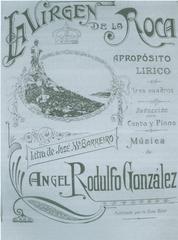
Tui Station Visiting Hours, Tickets, and Comprehensive Guide to Tui Historical Sites
Date: 04/07/2025
Introduction
Tui Station serves as a pivotal gateway to Galicia’s historic town of Tui, Spain, situated on the scenic banks of the Minho River at the crossroads of Spain and Portugal. More than just a transit hub, Tui Station is emblematic of centuries of cross-border exchange, trade, and pilgrimage. Its proximity to iconic landmarks, such as the Santa María Cathedral and medieval city walls, as well as its role in the Portuguese Way of the Camino de Santiago, makes Tui Station an essential entry point for travelers, pilgrims, and history enthusiasts alike (Galicia Guide; Portugal Visitor).
This guide provides detailed information on Tui Station’s visiting hours, ticketing, accessibility, and local travel tips, along with an in-depth exploration of Tui’s remarkable historical sites and cultural experiences. Whether you are planning a pilgrimage, a cultural excursion, or simply passing through, this article will help you make the most of your visit.
Historical Background: From Roman Origins to Cross-Border Hub
Tui’s origins trace back to its days as the Roman settlement of Tude, a crucial juncture in the ancient road network of northwestern Iberia (Galicia Guide). Its strategic location across from Valença do Minho, Portugal, established Tui as a center for military defense, commerce, and cultural exchange through the centuries.
The introduction of the railway in the 19th century marked a transformative era for Tui and the region. The construction of the Tui-Valença International Bridge was a milestone, enabling seamless road and rail connections across the Minho River and strengthening the social and economic links between Spain and Portugal (Dá nas Vistas; Forgotten Galicia).
Tui Station: Architecture and Facilities
Tui Station exemplifies the practical yet historically resonant style of late 19th and early 20th-century Galician railway architecture. The station is a modest, functional building with a rectangular design, pitched roof, and light-colored walls. Its strategic placement near the town center and the iconic Ponte Internacional Tui-Valença ensures both convenience and impressive views of the surrounding countryside (Portugal Visitor).
Facilities include:
- Ticket Office: Open during main train times.
- Waiting Area: Basic seating; limited indoor space.
- Restrooms: Available during station hours.
- Accessibility: Ground-level access and ramps facilitate movement for travelers with reduced mobility. For specific needs, advance notice to Renfe or Comboios de Portugal is recommended.
- [Luggage & Pilgrim Services: No left-luggage facility onsite, but local hostels and Camino service providers offer luggage transfer and storage for pilgrims (Viajecaminodesantiago).](#luggage-&-pilgrim-services:-no-left-luggage-facility-onsite,-but-local-hostels-and-camino-service-providers-offer-luggage-transfer-and-storage-for-pilgrims-(viajecaminodesantiago).)
Visiting Hours and Ticketing
Station Opening Hours:
Typically, the station operates from early morning (around 6:30 AM) to late evening (about 9:00 PM). Hours may vary on weekends and holidays. Always check the Renfe website or local notices for current information.
Ticket Purchase:
- Local and Regional Tickets: Available at the station ticket office or online via Renfe.
- International Tickets: For the Celta service (Vigo-Porto), tickets can be purchased through Renfe or Comboios de Portugal (Comboios de Portugal).
- Advance Booking: Strongly advised during peak travel periods, especially during pilgrimage season.
Access and Connectivity
Rail Connections
Tui Station connects Galicia with northern Portugal via regional Renfe trains to Vigo and other cities. The Celta international train service links Vigo with Porto, stopping near Tui at Valença. The station provides easy access for cross-border travel by train, car, taxi, or on foot (Portugal Visitor).
Road and Bus Access
The E-1 highway and regional bus services by Monbus and Lugove ensure direct connections to Tui and neighboring Galician towns (Viajecaminodesantiago).
Parking and Car Hire
Street parking is available, with paid lots nearby for greater security. Car rentals are accessible in Vigo and Porto.
Air and Multimodal Access
Vigo Airport (25 km) and Porto Airport (120 km) are the nearest airports, both well-connected to Tui by train and bus.
Visitor Tips and Practical Information
- Timetables: Always confirm schedules on Renfe or Comboios de Portugal.
- Language: Spanish and Galician are spoken locally; English is less common, so basic phrases or translation apps are helpful.
- Accommodation: Reserve in advance during summer and pilgrimage seasons; choices range from historic hotels to hostels (Portugal Visitor).
- Accessibility: While the station is mostly accessible, certain historic attractions may have limited facilities for those with reduced mobility.
- Pilgrim Services: Luggage transfer and information are available from local Camino service providers.
Exploring Tui: Top Historical Sites
Santa María Cathedral
A Romanesque-Gothic masterpiece, the cathedral is a highlight of Tui’s heritage.
Visiting Hours: Monday to Saturday, 10:00 AM–1:30 PM & 3:30 PM–7:00 PM; Sundays/holidays, 11:00 AM–1:00 PM.
Tickets: Free admission; guided tours may require a small fee.
Medieval Old Town and Walls
Wander through cobblestone streets lined with stone houses, plazas, and remnants of the town’s ancient fortifications.
Minho River and Ponte Internacional Tui-Valença
Enjoy riverside walks and panoramic views from the historic bridge, a symbol of Spain-Portugal cooperation (Portugal Visitor).
Monte Aloia Natural Park
A nature reserve just outside Tui, offering hiking trails and stunning vistas.
Jewish Quarter
Discover Galicia’s only documented medieval Jewish butcher on Carnizaría Street and learn about the town’s multicultural past.
Pilgrimage and the Camino de Santiago
Tui is a major gateway for the Portuguese Way of the Camino de Santiago. The town marks the minimum distance required to earn the Compostela certificate. Services for pilgrims include albergues, luggage transfer, and information centers.
Seasonal Considerations
- Peak Periods: Summer and Holy Week bring more visitors; book accommodations and train tickets in advance.
- Weather: Galicia is mild but often rainy—pack accordingly.
- Events: Tui hosts religious and cultural festivals; check the Spain.info events calendar for details.
Sustainable and Responsible Travel
- Use public transportation when possible.
- Support local businesses and artisans.
- Respect local customs, language, and historical sites.
Frequently Asked Questions (FAQs)
Q: What are the station’s opening hours?
A: Generally open from 6:30 AM to 9:00 PM, but hours may vary. Check Renfe before visiting.
Q: Can I purchase train tickets online?
A: Yes, through Renfe, Comboios de Portugal, or The Trainline.
Q: Is the station accessible for travelers with disabilities?
A: Mostly ground level and accessible, but some features may be limited; notify staff in advance for assistance.
Q: Are there pilgrim services at the station?
A: No dedicated facilities, but local hostels and Camino providers offer luggage transfer and support.
Q: How do I cross into Portugal?
A: The Ponte Internacional Tui-Valença bridge allows for vehicle, train, and pedestrian crossing without passport controls.
Visuals and Media Suggestions
- Photos of Tui Station, the Ponte Internacional, Santa María Cathedral, and medieval old town.
- Interactive maps showing Tui’s relation to the border and major attractions.
- Virtual tours available via the Tui tourism website.
Internal Links
Conclusion and Call to Action
Tui Station is more than a transport hub—it’s a living monument to Tui’s ongoing story of cross-border unity, pilgrimage, and history. With its accessible facilities, strategic connections, and proximity to some of Galicia’s most treasured sites, Tui offers a unique opportunity to experience the intersection of tradition and modern travel.
For real-time updates, schedules, and travel tips, consult the Renfe website and local tourism resources. Download the Audiala app for interactive guides, and follow our channels for the latest on Galicia’s historic towns.
Start your journey at Tui Station—and step into the timeless heart of Galicia.
Sources and Further Reading
- Galicia Guide - Tui
- Dá nas Vistas - Tui Museum
- Forgotten Galicia - Railway Architecture
- Portugal Visitor - Tui Guide
- Renfe Official Website
- The Trainline - Tui Station
- Spain.info - Tui Destination
- Viajecaminodesantiago - Getting to Tui
- Spain This Way - Tui



